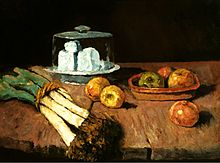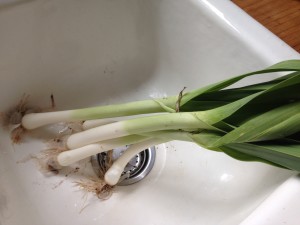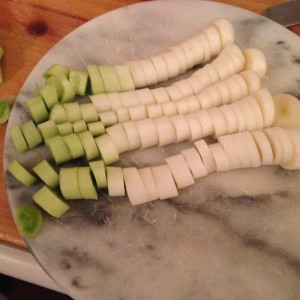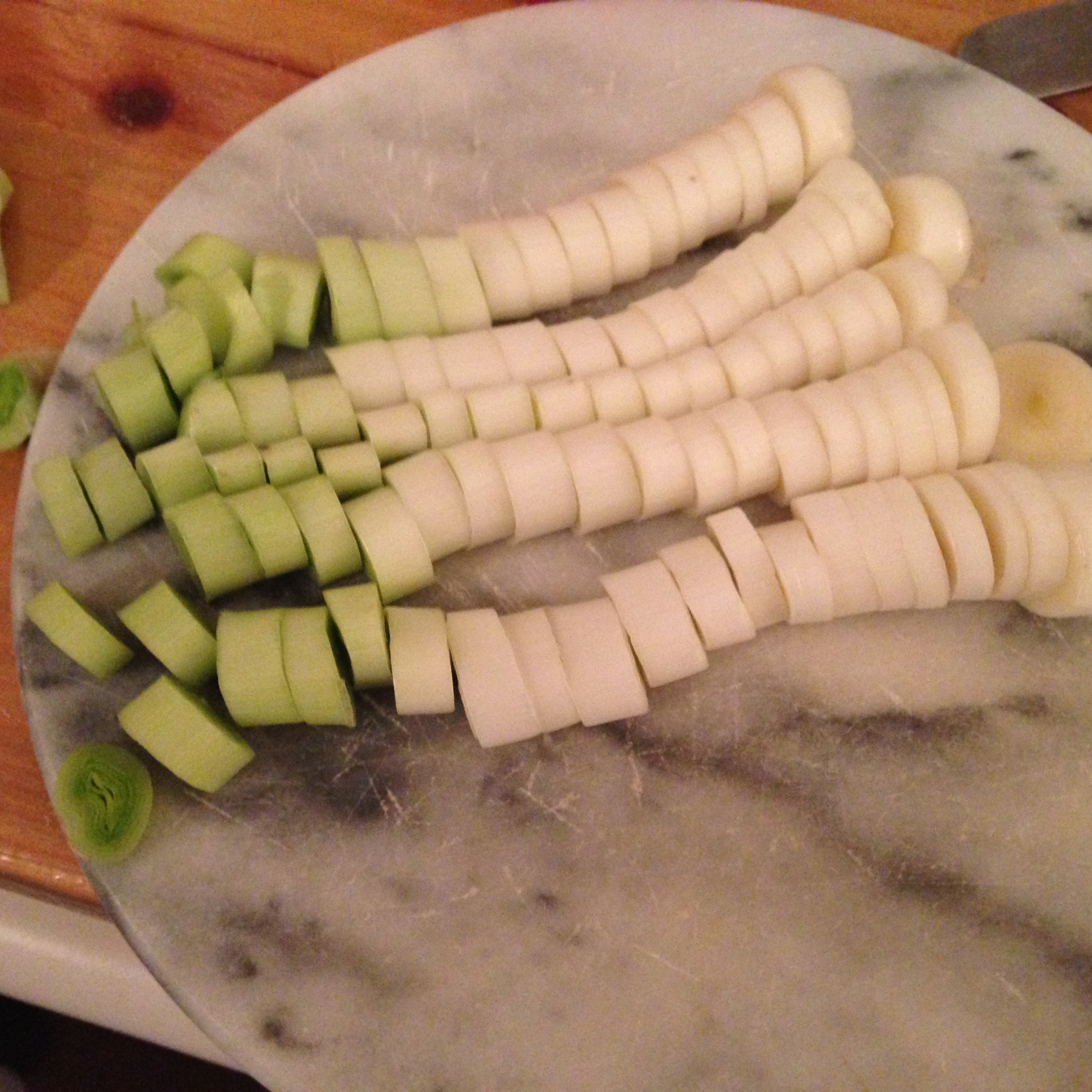 We are blessed to have quite a few wild food items growing on the property, among which is more wild leeks than you can shake a stick at. For a long time, we assumed they were stands of garlic, which is also growing everywhere here, so we didn’t study them closely. We just figured we had so much garlic already, that we’d never get to those off past the garden. But happily, we eventually dug one up to see what we could see, and it was a beautiful, yummy leek…the stuff of ancient still lifes.
We are blessed to have quite a few wild food items growing on the property, among which is more wild leeks than you can shake a stick at. For a long time, we assumed they were stands of garlic, which is also growing everywhere here, so we didn’t study them closely. We just figured we had so much garlic already, that we’d never get to those off past the garden. But happily, we eventually dug one up to see what we could see, and it was a beautiful, yummy leek…the stuff of ancient still lifes.
Leeks are not a well-known food, from what I can discern in talking with people I know, but it should be advertised and introduced to those that haven’t discovered the perfect cross between onions and garlic. From what I’ve read, wild leeks tend to be a bit smaller than cultivated ones but have a stronger flavor. They are in the same family as onions, garlic, and shallots, genus Allium, so they have a similar nutritional value. The World’s Healthiest Foods website has an excellent chart on the nutritional value of leeks. The micronutrients and minerals in them are impressive.
 While onions form tight bulbs and garlic produces solid cloves, the leek produces a long cylinder of bundled leaf sheaths. I learned a new term while researching this that I didn’t realize had more than one meaning…blanching. I am familiar with the term in cooking, in which you quickly dip something in boiling water and then immediately put it into cold water, but had never heard it used in gardening.
While onions form tight bulbs and garlic produces solid cloves, the leek produces a long cylinder of bundled leaf sheaths. I learned a new term while researching this that I didn’t realize had more than one meaning…blanching. I am familiar with the term in cooking, in which you quickly dip something in boiling water and then immediately put it into cold water, but had never heard it used in gardening.

Leeks are easy to grow from seed, but are also sold as small seedlings early in the growing season. Once established in the garden, leeks are hardy, as well as pest and disease resistant. There are different varieties, some harvested in summer and some in the fall. These fall varieties can be left in the ground during the winter to be harvested as needed. Our wild leeks have been in the ground for years, and we go out and get what we want for dinner. They come back year after year without any input from us, so they are truly maintenance free.
 There are plenty of leek recipes out there, but my favorite use for them is sauteed in butter and used in place of onions with meat and flavoring in chicken soup. When I cook a whole chicken for dinner, I boil the leftover bones, skin, etc. in a stock pot with leeks chopped up in it and then let it simmer for several hours (or all day). I then add back in the chicken I’ve picked out after it cools, along with some rice or noodles, and it is honestly the best chicken soup I have ever had.
There are plenty of leek recipes out there, but my favorite use for them is sauteed in butter and used in place of onions with meat and flavoring in chicken soup. When I cook a whole chicken for dinner, I boil the leftover bones, skin, etc. in a stock pot with leeks chopped up in it and then let it simmer for several hours (or all day). I then add back in the chicken I’ve picked out after it cools, along with some rice or noodles, and it is honestly the best chicken soup I have ever had.
